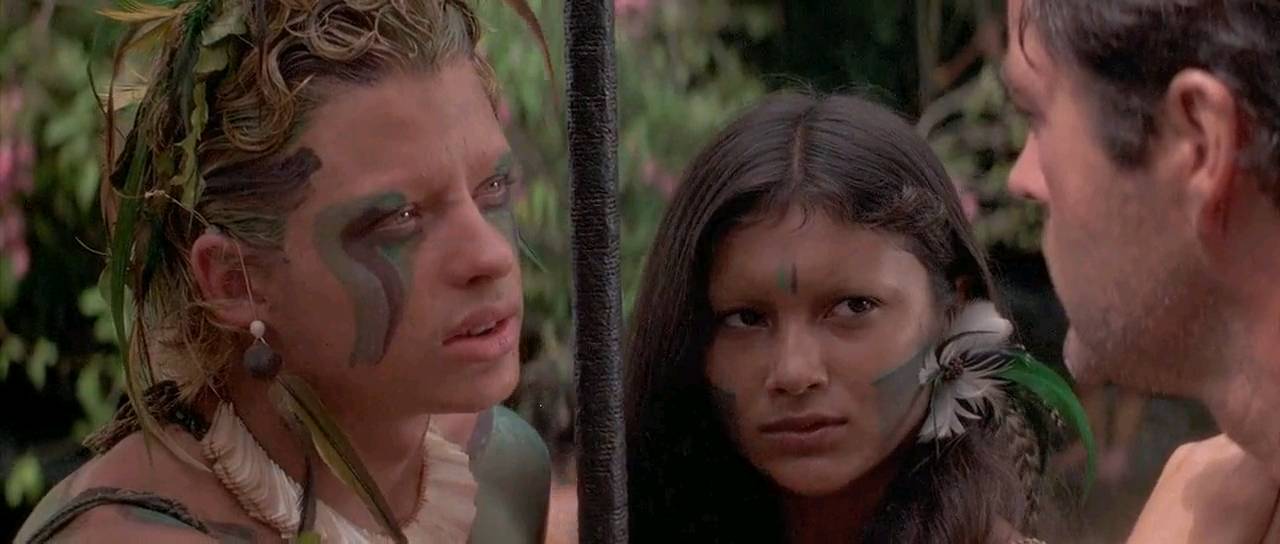John Boorman Leads us Into the Woods
DIRECTED BY JOHN BOORMAN/1985
BLU-RAY STREET DATE: NOVEMBER 28, 2023/KL STUDIO CLASSICS
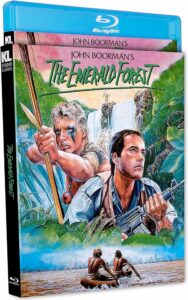
While far from the height of eco consciousness, it was indeed possible to go green during the Reagan administration. Just ask noteworthy filmmaker John Boorman, whose ambitious rooted-in-truth action/drama The Emerald Forest was shot in the endangered Amazon Rain Forest.
Let me repeat that… this film was shot in the Amazon Rain Forest. A confirmed nightmare of monumental logistical challenges, debilitating heat, and First World germs invading a Third World environment, the making of this now-virtually forgotten mainstream release sounds just short of Herzog-ian tribulation.
Not to jump straight to the ending, but the film’s closing epilogue states: “The Rain Forests of the Amazon are disappearing at the rate of 5,000 Acres per day. Four million Indians once lived there. 120,000 remain. A few tribes have never had contact with the outside world. They still know what we have forgotten.“
It’s 1985… do you know where your children are? That’s a question for Bill and Jean Markham (Powers Boothe and Meg Foster), who’ve brought their two young children into the heart of rapidly cleared darkness. He’s a high-ranking engineer for the work being done by a big fat American company called Amazco, which has descended upon the Rain Forests with their bulldozers and construction equipment and sprawling materials. Bill and Jean are not bad parents. They engage with their two kids and always make sure they’re within eyesight. Nevertheless, when their young son Tommy ventures into the clearing, he finds people. Jungle people. More to the point, these people find Tommy. And just like that, the boy is gone.
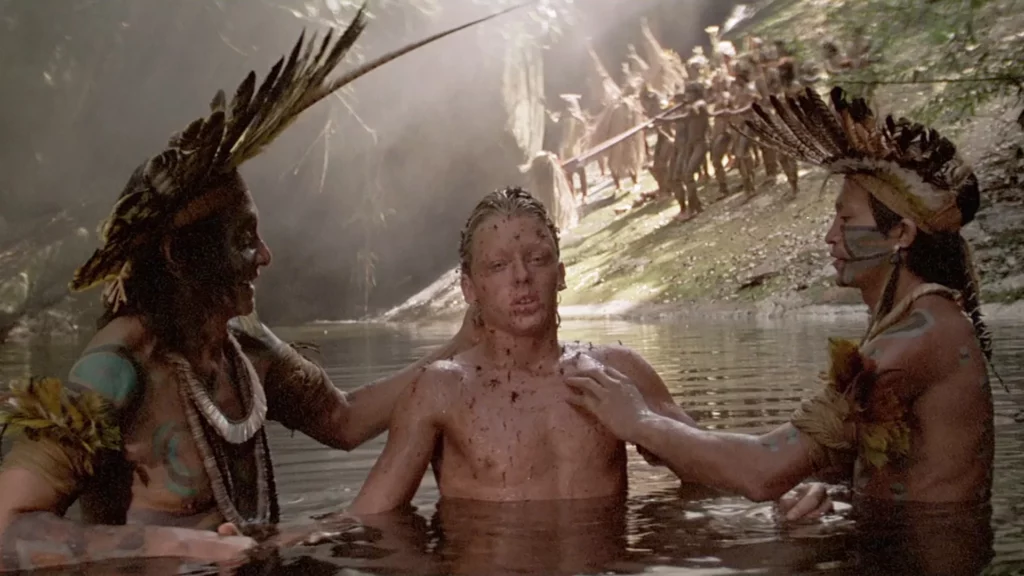
Cut to ten years later. Amazco’s imposing dam is nearly complete. Bill and Jean Markham, still on board with the project, have also devoted themselves to learning the ways of the rarely glimpsed indigenous peoples of the Rain Forests. One day, when circumstances lead Bill further into the woods, he is reunited with his long-lost son. And just like that, the boy is back. But he’s not the same.
Tomme, as he’s now known, has grown into an able-bodied teenager. Prior to Bill showing up, we witness his ceremonial passage into manhood with his adoptive family, a peaceful tribe isolated from the modern world. They are known as “the Invisible People.” They are locked in ongoing tension with the aggressive “Fierce People.” The impending decimation of their habitat is a known inevitability, though they cannot comprehend the death knell that Bill’s dam poses to their way of life. Bill, on the other hand, understands this perfectly well. As he grows to sympathize with the Invisible People, the question arises… what, if anything, will he do?
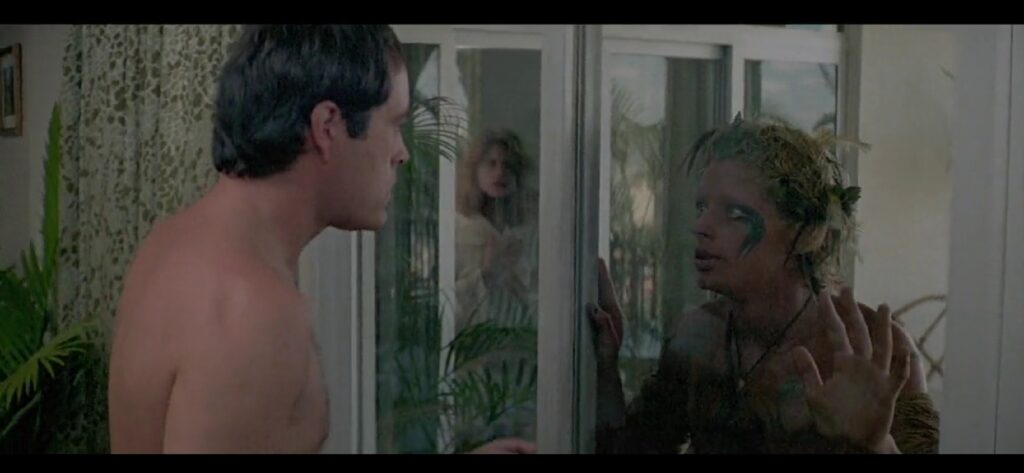
On my initial viewing of The Emerald Forest, I did not know that the actor playing Tomme is the director’s son, Charley Boorman. That such casting would ignite controversy and even scoffs prior to and upon the film’s release is frankly understandable. The younger Boorman’s performance, though, did nothing to signal unworthiness aside from his bearing no resemblance whatsoever to the actors playing his biological parents.
While netting the prominent part of Tomme in this film was no doubt considered a boon back in the day, John Boorman quite likely reasoned that placing his son in the role would be a positive for the production. He was, after all, asking an awful lot of his crew and actors, particularly those playing the tribe members, who are darn near naked the entire time. “If Boorman is willing to subject his own son to the dangerous environment and the unrelenting heat and the nudity and the body paint, then I can handle it too!”, was a probable mantra of the company.
It is said that The Emerald Forest is based on a true story. It obviously didn’t cling too closely to that notion, as it freely indulges intangible notions such as induced prophetic dreams and spirit animal visions. These aspects are to the film’s benefit as it is, above all, a kind of dark fairy tale. Boorman’s use of mid-‘80s state-of-the-art visual effects dates the movie more than anything else (not a bad thing), placing it contemporaneous to Ghostbusters and Indiana Jones and the Temple of Doom. It probably cost as much to make as those did, if not more.
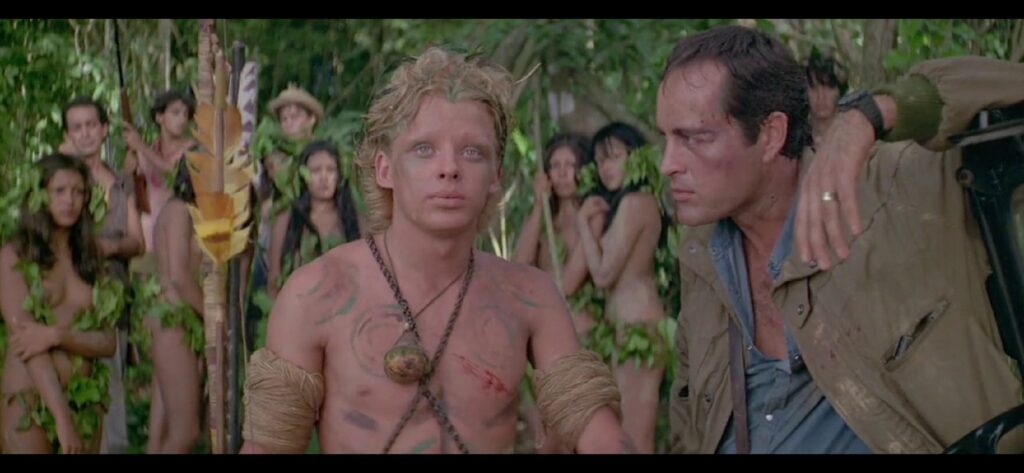
Though Boorman (Deliverance; Excalibur) had previously made his mark as a director to follow, The Emerald Forest was not well received. Today, KL Studio Classics has revisited its previous Blu-ray release of the film by releasing it with an improved audio track (their earlier edition reportedly has “popping” sounds), though the transfer is exactly the same as their earlier version. There’s room for improvement with that transfer, but this is likely as good as this film is going to look on home video. KL has opted to include a new audio commentary by filmmaker Edgar Pablos and film historian Nathaniel Thompson. It’s a good one, as Boorman and The Emerald Forest offer up more than enough talking points for these engaging speakers to detail. Aside from that, the cardboard slipcover is the only other new inclusion.
With its cross-cutting between ants carrying off pieces of leaves and bulldozers flattening the landscape, The Emerald Forest seems to be asking, what’s the difference between pillaging nature and harvesting it? Amid Boorman’s unmistakable messaging about the perils of sacrificing the Rain Forests lie more subtle (if not always perfectly clear) observations. Really though, it is the tale of a grieving father having to reconcile with the loss of his son to a different world, and the son trying to make him understand that it’s all okay. Today, so many of us know those thickets….


